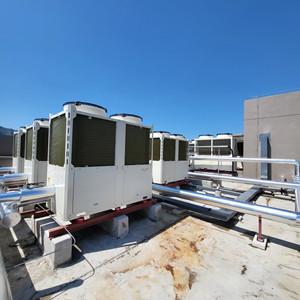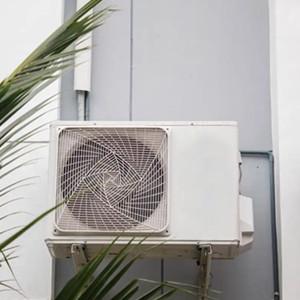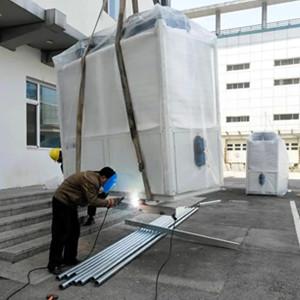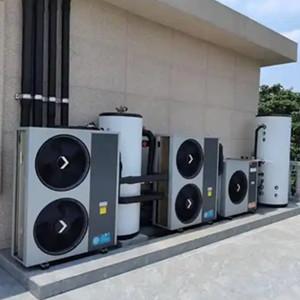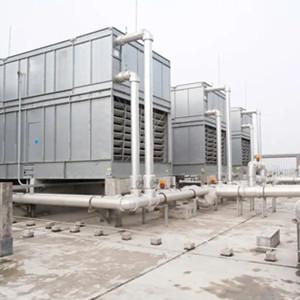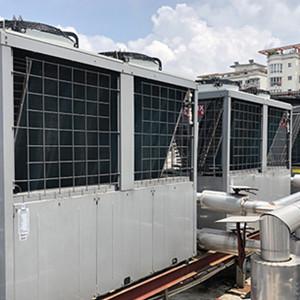Combining Air Source Heat Pumps and Solar Panels
The solar panel + air source heat pump heating system is a composite energy system that combines solar power generation with air source heat pump technology. It achieves efficient heating through the dual use of solar energy and air source heat pumps, and has significant environmental protection, energy saving and economic benefits.
Working Principle
Solar panels convert sunlight into electrical energy and directly drive air source heat pumps. Air source heat pumps extract low-temperature heat energy from the air, increase the temperature through compressors, and use it for heating and hot water supply.
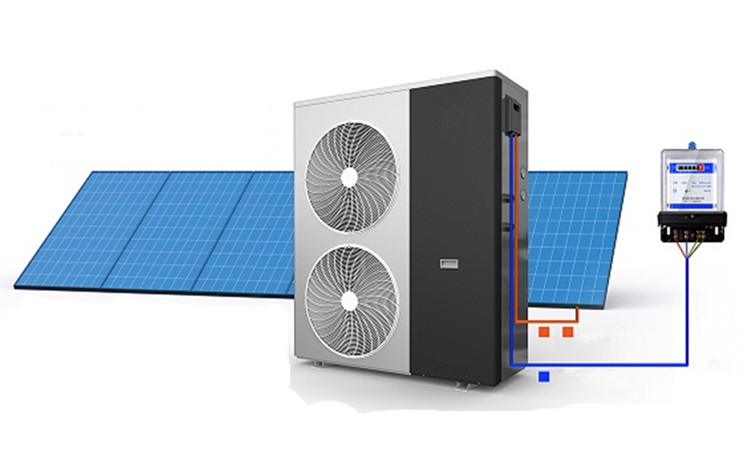
Advantages
1. High efficiency and energy saving
Solar panel power generation reduces dependence on the external power grid, and the comprehensive energy efficiency ratio (COP) of air source heat pumps can reach more than 4.0, which is 60%-75% more energy-efficient than traditional electric heaters. Air source heat pumps can generate 3-4 times the heat energy for every kilowatt-hour of electricity consumed, which is especially suitable for areas with large temperature differences between day and night or sufficient sunlight.
2. Environmental protection and low carbon
With solar energy and air source heat pumps as the main energy sources, there is no combustion process, and no emissions of pollutants such as carbon dioxide and sulfide, which meets the "dual carbon" target requirements.
3. Wide temperature range operation
Some advanced models can operate stably in an extremely cold environment of -35℃, and the heating efficiency is 30%-50% higher than that of traditional heat pumps.
4. Comfort and health
The water circulation system is used, combined with floor heating or fan coil units, the air flow is soft, and the indoor temperature fluctuation is less than ±0.5℃, which meets the comfort needs of the human body.
5. Intelligence and flexibility
Support remote control, time-sharing temperature adjustment, and can be connected to the smart home system to achieve energy management optimization.
6. Economic benefits
Reduce energy costs, and excess electricity can be sold back to the power grid, which may enjoy national subsidies.
Limitations
1. High initial investment
The equipment purchase and installation costs are high, about 2-3 times that of traditional electric heaters, and additional solar panels and energy storage systems are required, which further increases the cost.
2. Dependence on environmental conditions
The efficiency of solar panel power generation is affected by the intensity of light, and it needs to rely on grid power supplement in rainy weather; the heating efficiency of air source heat pump decreases at extremely low temperatures (such as below -25℃), and electric auxiliary heating may need to be started, increasing energy consumption.
3. Complex installation and maintenance
It requires a professional team to design and install, and has strict requirements on roof space, pipe insulation and equipment matching. Later maintenance involves technical links such as solar panel component cleaning and refrigerant pressure detection.
4. Energy storage technology bottleneck
The current cost of supporting heat storage system is relatively high, which affects large-scale application.
Applicable scenarios
1. Central heating in cold areas
Large communities or commercial buildings in cold areas in the north can achieve stable heating through ultra-low temperature models.
2. Environmental protection demonstration areas or policy support areas
The government's "coal to electricity" project or low-carbon city pilot reduces user costs with the help of subsidy policies.
3. Areas with abundant light resources
In areas with sufficient light such as Northwest and North China, solar panel power generation can cover part of the electricity demand of heat pumps and improve the economy of the system.
4. High comfort demand scenarios
Places such as hotels and hospitals that require high temperature and humidity control, taking into account energy saving and comfort.
5. Rural and urban suburbs
Houses with large living areas and long sunshine hours are more suitable for installation.
6. Commercial places
Places that require a lot of heating, such as bath centers, hotels, shopping malls, etc.
Future development
1. Technical innovation direction
Low-temperature performance optimization, widening the operating temperature range through frequency conversion technology and cascade heat pump design; energy storage costs are reduced and system efficiency is improved.
2. Policy and market driven
The national "14th Five-Year Plan" new energy storage plan promotes the commercialization of thermal energy storage technology and increases the subsidy amount.
Summary
The solar panel + air source heat pump heating system has significant advantages in energy efficiency, environmental protection and comfort, especially suitable for cold areas and policy-supported projects, but the high cost and technical threshold still need to be broken through. With the maturity of energy storage technology and the increase in policies, it is expected to become one of the mainstream heating methods in the future.
